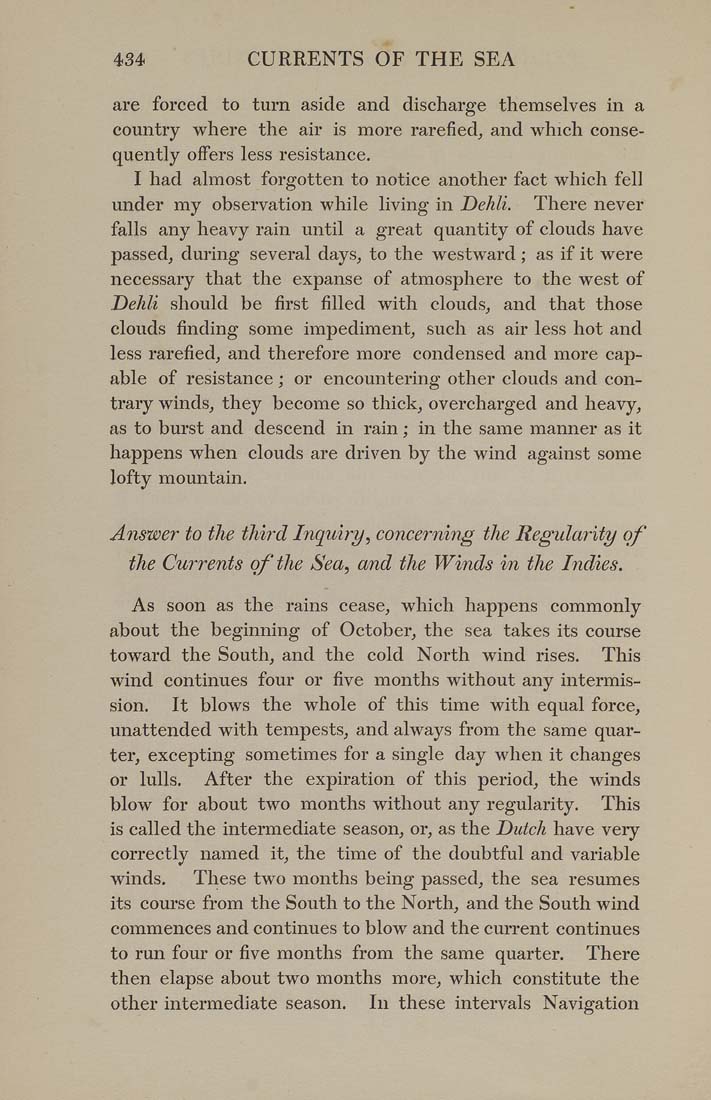434 CURRENTS OF THE SEA
are forced to turn aside and discharge themselves in a
country where the air is more rarefied, and which conse¬
quently offers less resistance.
I had almost forgotten to notice another fact which fell
under my observation while living in Dehli. There never
falls any heavy rain until a great quantity of clouds have
passed, during several days, to the westward ; as if it were
necessary that the expanse of atmosphere to the west of
Dehli should be first filled with clouds, and that those
clouds finding some impediment, such as air less hot and
less rarefied, and therefore more condensed and more cap¬
able of resistance; or encountering other clouds and con¬
trary winds, they become so thick, overcharged and hea-vy,
as to burst and descend in rain; in the same manner as it
happens when clouds are driven by the wind against some
lofty mountain.
Answer to the third Inquiry, concerning the Regularity of
the Currents of the Sea, and the Winds in the Indies.
As soon as the rains cease, which happens commonly
about the beginning of October, the sea takes its course
toward the South, and the cold North wind rises. This
wind continues four or five months without any intermis¬
sion. It blows the whole of this time with equal force,
unattended with tempests, and always from the same quar¬
ter, excepting sometimes for a single day when it changes
or lulls. After the expiration of this period, the winds
blow for about two months without any regularity. This
is called the intermediate season, or, as the Dutch have very
correctly named it, the time of the doubtful and variable
winds. These two months being passed, the sea resumes
its course from the South to the North, and the South wind
commences and continues to blow and the current continues
to run four or five months from the same quarter. There
then elapse about two months more, which constitute the
other intermediate season. In these intervals Navigation
|








